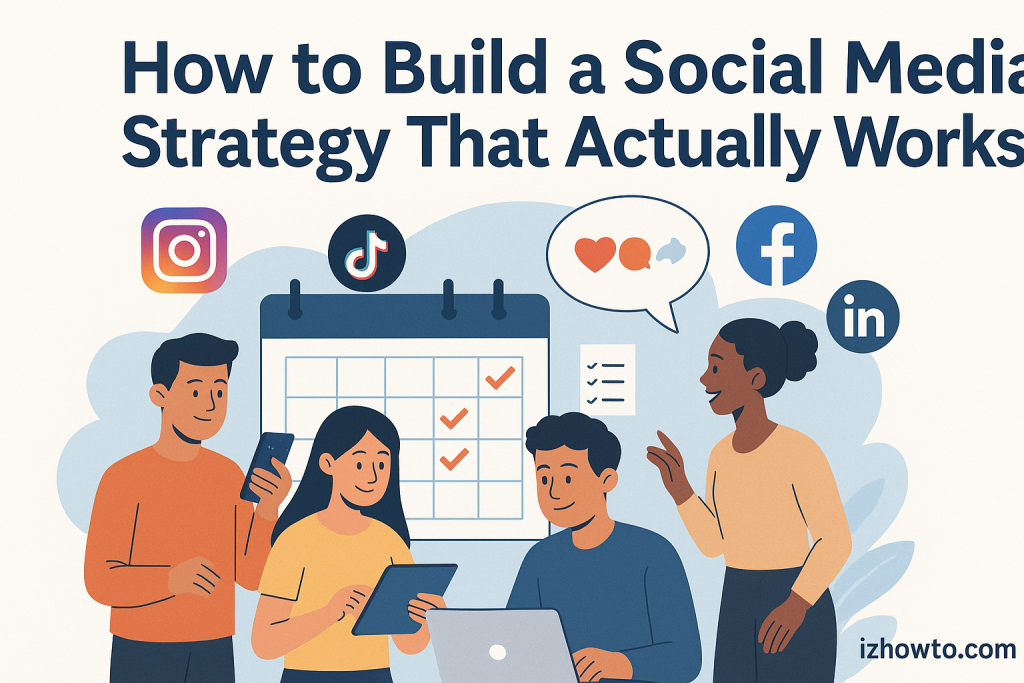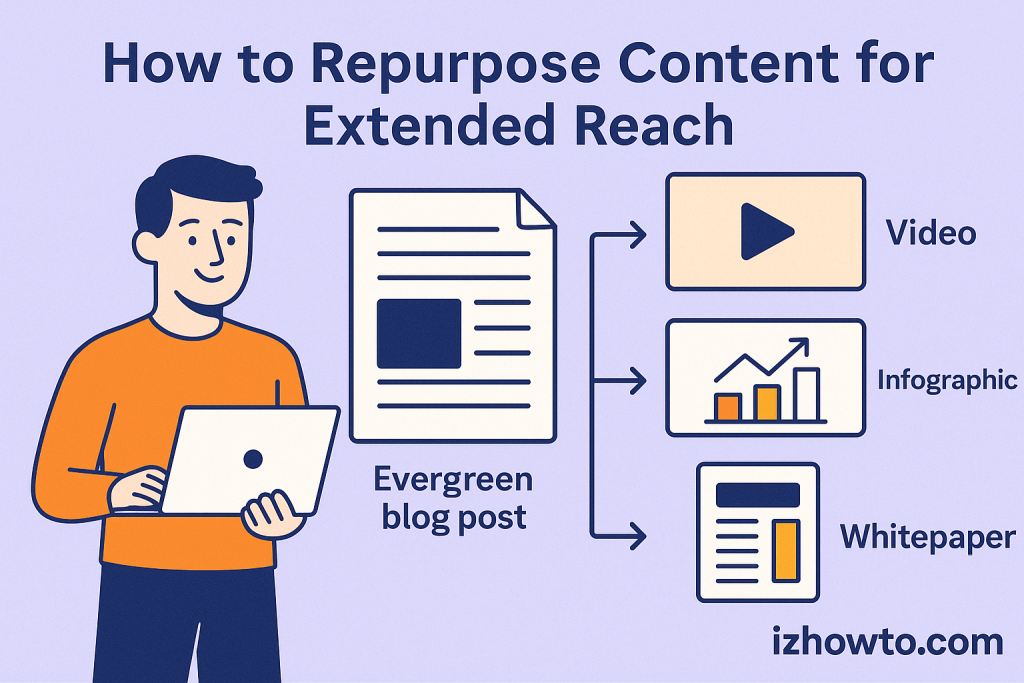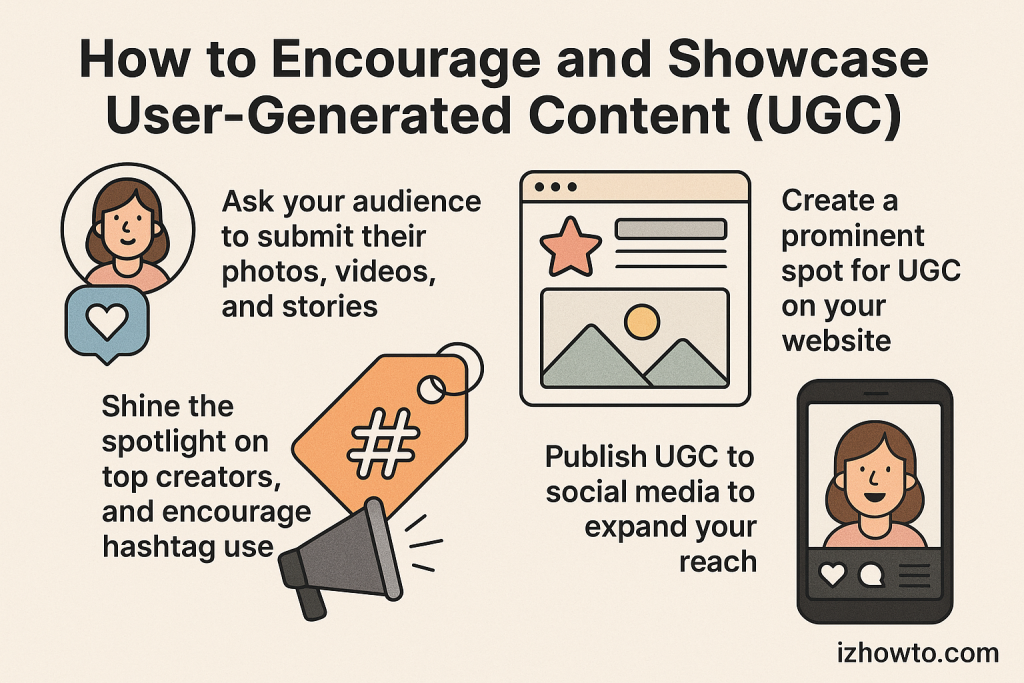If you’ve ever poured your heart into creating a killer blog post, podcast, or video—only to see it get lost in the digital noise—you’re definitely not alone. The internet is crowded, and grabbing (and holding) someone’s attention is tougher than ever. So, how do you make sure your valuable content actually gets noticed and shared? Here’s a user-friendly guide on how to boost your content reach and engagement with five powerful tactics that really work—whether you’re building a personal blog, managing a brand, or just starting out.
1. How to Build a Social Media Strategy That Actually Works
If you want your content to reach more people, you have to show up where your audience already hangs out. And for most of us, that means social media. But here’s the thing: simply dropping a link and hoping for the best won’t cut it anymore. The secret to real results is having a plan that’s both intentional and adaptable—one that focuses on consistent value, authentic engagement, and the smart use of each platform’s features.

Know Where Your Audience Is
Every social media platform attracts a different crowd, so start by figuring out where your ideal readers or customers spend their time. For example:
-
Instagram & TikTok: Great for visual, lifestyle, fashion, and younger audiences.
-
LinkedIn: Perfect for B2B, professionals, and thought leadership.
-
Facebook: Broad, community-focused, ideal for local businesses, events, or groups.
-
YouTube: Essential for educational, how-to, and storytelling content.
Tip: Don’t spread yourself too thin. Pick 1–3 platforms and do them well.
Stay Consistent, But Not Robotic
Success isn’t about posting dozens of times per week, but about showing up regularly with content your audience finds useful or inspiring. Make a simple content calendar. Plan out posts in advance, but also leave room for spontaneous, real-life updates (a behind-the-scenes snap, a trending meme with your twist, or a quick video response).
Example:
A food blogger might share a weekly recipe video on Instagram Reels, daily tips in Stories, and engage with food hashtags and comment threads. Every Tuesday, their followers know to check for “Tasty Tip Tuesday”—that’s both consistency and personality.
Make the Most of Platform Features
Each platform has unique tools to help you get noticed.
-
Stories, Shorts, Reels: These get priority in feeds and are perfect for quick tips, announcements, or behind-the-scenes moments.
-
Polls and Q&As: Encourage interaction and find out what your audience cares about.
-
Live Streams: Build trust and community in real time—try a “live Q&A,” product demo, or casual chat.
Tip: Use analytics (built-in on most platforms) to check which content types and times work best for your audience. Tweak your approach as you learn.
Engage—Don’t Just Broadcast
“Post and ghost” is when you share something and disappear. Instead, stick around! Respond to comments, ask questions, and jump into conversations in your niche (not just your own page!). When you interact, you’re rewarded with better reach—and people will remember you.
Example:
A small business owner shares a customer story and asks, “What’s your favorite way to use our product?” Respond to every answer, share your favorites in your Stories, and thank people for contributing.
Hashtags and Trends—Be Smart, Not Spammy
Hashtags aren’t just for looks—they help new people discover your content. Mix broad hashtags (like #MarketingTips) with niche ones (#PlantBasedMarketing or #MinimalistWorkspace).
Follow trending topics, but always add your unique spin. Don’t chase every trend—choose those that fit your brand.
Tip:
Use free tools like Hashtagify or TikTok Creative Center to research which hashtags and trends are hot in your field.
Collaborate and Cross-Promote
Partnering with others in your space is one of the fastest ways to grow. Do guest posts, co-host a live session, or participate in challenge hashtags. Tagging and collaborating lets you tap into each other’s audiences—win-win!
Recap: Your Social Strategy Checklist
-
Know your audience and focus on their favorite platforms
-
Post regularly and mix up your content formats
-
Use each platform’s features (Stories, polls, lives) to boost reach
-
Interact and build relationships, not just followers
-
Use hashtags and trends thoughtfully
-
Collaborate and cross-promote to multiply your impact
In short:
A real social media strategy is about connection, not just promotion. Show up, listen, give value, and your reach—and engagement—will naturally follow.
2. How to Optimize Your Content for Speed and Accessibility
Even the best content can go unnoticed if your website is slow to load or difficult to use. Visitors won’t wait around for a laggy page, and search engines will penalize you too. But speed and accessibility aren’t just technical buzzwords—they’re what make your content enjoyable and shareable for everyone. Here’s a practical, step-by-step guide on how to make your content fast and accessible, even if you’re not a tech wizard.

Why Speed and Accessibility Matter
Think about your own habits: Have you ever closed a website that took more than a couple of seconds to load? Most people do. In fact, studies show that 40% of users will abandon a site if it takes more than 3 seconds to appear. Plus, if your site isn’t accessible—meaning people with disabilities can’t navigate it easily—you’re missing out on a huge audience and potentially breaking the law in some countries.
Reduce Page Size and Streamline Code
Start by minimizing how much your visitors’ browsers have to download.
-
Optimize Images: Use compressed formats (like WebP or JPEG), resize images before uploading, and avoid huge background photos unless necessary. Free tools like TinyPNG or Squoosh can compress images in seconds.
-
Limit Plugins and Widgets: Every extra plugin or widget (like chat pop-ups, weather widgets, or auto-play videos) slows your site. Keep only what’s essential.
-
Clean Up Your Code: Use tools like PageSpeed Insights to find bloated code, unused CSS/JavaScript, or large scripts. Ask your developer to fix, or use plugins like WP Rocket if you’re on WordPress.
Use a Content Delivery Network (CDN)
A CDN distributes your website’s files to servers all over the world, so your content loads fast no matter where your visitor is.
-
How it works: Instead of every visitor loading your site from a single server (maybe in the US), a CDN has servers across the globe. Visitors get your content from the closest server, reducing wait time.
-
Getting started: Cloudflare and Bunny.net offer beginner-friendly plans (even free tiers!) and easy setup for most websites.
Enable Compression and Browser Caching
-
Compression: Enable Gzip or Brotli compression on your server to shrink files as they’re sent to browsers. Most hosts can turn this on for you, or you can do it with a plugin.
-
Browser Caching: This lets returning visitors load your site much faster because their browser “remembers” your files. On WordPress, plugins like W3 Total Cache make this easy.
Make Your Site Mobile-Friendly
More than half of web traffic is now mobile.
-
Responsive Design: Use a theme or template that adjusts beautifully to different screen sizes.
-
Big, Clickable Buttons: Make sure links and buttons are easy to tap, not tiny or crowded together.
-
Test Your Site: Use Google’s Mobile-Friendly Test to spot problems.
Improve Navigation and Structure
A confusing site drives visitors away.
-
Clear Menus: Use simple, predictable menus at the top or side of your pages.
-
Breadcrumbs: Help users know where they are on your site and how to get back.
-
Internal Linking: Link related articles together, so visitors naturally explore more of your content.
Make Content Accessible to Everyone
-
Use Proper Headings: Structure content with H1, H2, H3 tags—don’t just make text bigger or bolder.
-
Alt Text for Images: Every image should have a descriptive “alt” tag, so screen readers (and Google!) know what’s in the image.
-
Readable Fonts and Colors: High contrast, clear fonts, and no tiny text. Avoid red/green only color schemes.
-
Caption Videos: Always include captions or transcripts for audio and video content.
Tools to Help:
-
WAVE Accessibility Tool: Get a free report on your site’s accessibility.
-
Lighthouse (in Chrome DevTools): Audit performance and accessibility.
Extra Tips for WordPress Users
-
Use lightweight themes like Astra, GeneratePress, or the default Twenty Twenty-Three.
-
Avoid page builder plugins that add unnecessary bulk—stick to the new block editor (Gutenberg) if possible.
-
Keep plugins updated and remove the ones you don’t use.
Recap: Your Speed & Accessibility Checklist
-
Compress images and limit file size
-
Use a CDN to serve content globally
-
Enable compression and caching
-
Test and optimize for mobile devices
-
Simplify navigation and menu structure
-
Use alt text and proper headings for accessibility
-
Check your site with free online tools
In short:
Optimizing for speed and accessibility is about respecting your audience’s time and needs. A fast, user-friendly, and accessible site means happier visitors, better search rankings, and more shares. It’s a win for everyone—including you!
3. How to Repurpose Content for Extended Reach
If you’re pouring time and energy into creating quality content, why let it fade away after just one use? Repurposing is the smart creator’s secret weapon—it breathes new life into your best work, puts it in front of new audiences, and maximizes your return on effort. Even better, it saves you from creative burnout and the constant pressure to reinvent the wheel. Let’s break down exactly how to repurpose content, with practical tips and inspiring ideas.

Why Repurpose? The Magic of Multiplying Your Message
Repurposing content isn’t just about recycling—it’s about reimagining. People prefer to consume information in different ways: some read, some watch, some listen, and some scroll social feeds. By turning one great idea into multiple formats, you meet people where they are, extend your reach, and keep your message fresh.
Find Your Evergreen & High-Performing Content
Start by identifying content that already works:
-
Evergreen articles: Topics that stay relevant, like “How to Start a Blog” or “Productivity Hacks for Creatives.”
-
Popular posts: Use analytics to spot your most-shared or most-viewed articles, videos, or social media posts.
-
Content with lots of questions or comments: If people are engaging, that’s a sign the topic has legs.
Creative Ways to Repurpose Content
Here are some practical ways to multiply your impact:
-
Blog Post → Video or Podcast:
Turn a detailed article into a how-to video or a discussion for your podcast.
Example: A blog post about “Morning Routines” becomes a YouTube explainer or a podcast episode where you answer listener questions about building habits. -
Podcast Episode → Blog Series:
Break down a long episode into bite-sized blog posts, each focusing on a different subtopic or question. -
Infographic or Social Media Carousel:
Summarize key points from a guide or tutorial into a visually compelling infographic or a swipeable Instagram carousel. -
Webinar or Livestream → Downloadable Guide:
Transcribe your live session, organize the tips, and offer it as a free PDF download on your site. -
Social Media Threads → Newsletter Content:
If a Twitter or Facebook thread sparks lots of discussion, expand on the idea in your next email to subscribers. -
Q&A Sessions → FAQ Pages:
Collect common audience questions from live chats, emails, or social comments and turn them into a comprehensive FAQ or resource page.
Mix Up the Mediums
Different platforms, different audiences!
-
Visual Learners: Create short TikTok or Instagram Reels, infographics, or Slideshare decks.
-
Auditory Learners: Make podcasts or audio snippets from existing articles or Q&As.
-
Readers: Compile series of blog posts into an ebook, checklist, or ultimate guide.
Tip: Don’t forget to update and tweak your content for the new medium. For instance, when turning a blog post into a video, add visuals and a conversational script; when making a social graphic, focus on punchy quotes and stats.
Automate and Batch Your Repurposing
-
Set up a monthly “content audit”—look for top-performing pieces to refresh or reformat.
-
Use tools like Canva for graphics, Headliner for audiograms, or Descript for video-to-text.
-
Batch the process: Plan to create all repurposed content for the month in one go—this saves time and keeps your brand voice consistent.
Cross-Promote Your Repurposed Content
Don’t let your new content sit quietly! Whenever you publish a repurposed piece, link back to the original.
-
Mention your original article in your video (“Full details are on my blog!”).
-
Embed podcast episodes in related blog posts.
-
Link to your Instagram carousel from your newsletter.
This creates a content ecosystem where every piece supports and amplifies the others.
Recap: Your Repurposing Checklist
-
Identify evergreen and high-performing content to reuse
-
Choose the right new format for each audience segment
-
Tailor content for the platform and medium
-
Batch the process to save time and boost creativity
-
Cross-promote for maximum reach and engagement
In short:
Learning how to repurpose content is about working smarter, not harder. Your best ideas deserve a second (and third) act—so remix, reimagine, and watch your audience grow!
4. How to Leverage Visual and Interactive Content for Maximum Shares
It’s no secret: people are wired for visuals. In an age where attention spans are shrinking, eye-catching graphics and engaging, interactive experiences are some of your most powerful tools for cutting through the noise and making your content unforgettable. Here’s how you can turn your ideas into scroll-stopping, share-worthy content—even if you’re not a professional designer or video producer.

Why Visuals Matter More Than Ever
Think about the last time you paused your social media scroll. Odds are, it was because of an image, a meme, a video, or a colorful chart. Studies show that content with visuals gets far more views, clicks, and shares than text-only content. Visuals help people process information faster, remember it longer, and feel more emotionally connected to your message.
And it’s not just about pretty pictures—visual content can help explain complex ideas, show off your products, or share customer stories in a relatable, impactful way.
Types of Visual Content to Supercharge Your Reach
-
Original Images and Photography:
Take photos of your team, workspace, or process. Authentic images (even shot on a smartphone) feel more trustworthy than generic stock photos. -
Infographics:
Turn statistics, step-by-step processes, or “top tips” into easy-to-read graphics. Tools like Canva, Piktochart, or Venngage let you create pro-looking infographics in minutes—no design degree required. -
Short Videos and Reels:
Explainers, behind-the-scenes clips, tutorials, or day-in-the-life videos work wonders on platforms like Instagram, TikTok, and YouTube Shorts. -
GIFs and Memes:
Quick, light-hearted, and relatable, these are share magnets—perfect for breaking up long blog posts or making social posts more playful. -
Charts, Graphs, and Data Visualizations:
Make your research or case studies pop by transforming numbers into colorful, digestible charts. -
Slideshows or Carousels:
Use multi-image posts on Instagram or LinkedIn to guide your audience through a process or story, one engaging visual at a time.
Make Your Content Interactive
Interactive content isn’t just “nice to have”—it’s a game changer for engagement. When people actively participate, they remember you.
-
Polls and Quizzes:
Ask for opinions, run personality quizzes, or poll your followers about their challenges and preferences. -
Interactive Infographics:
Use clickable graphics or animations (with tools like Genially or ThingLink) to let visitors explore information at their own pace. -
Surveys and Forms:
Invite feedback, ideas, or questions—and use their answers to shape future content. -
Live Q&As or Webinars:
Host live video sessions where viewers can comment and ask questions in real time. Platforms like YouTube, Facebook, and Instagram make this simple. -
Contests and Challenges:
Encourage your audience to submit photos, stories, or videos related to your topic or product, then feature their submissions in your content.
Design Tips for Non-Designers
-
Keep It Clean and Simple:
Avoid clutter—use plenty of white space, stick to a few brand colors, and make sure text is large and readable. -
Consistent Branding:
Use the same fonts, color palette, and logo placement to make your visuals instantly recognizable. -
Mobile First:
Make sure images, videos, and graphics look great on phones. Use vertical or square formats for Instagram and TikTok, and always preview on mobile. -
Use Templates:
Tools like Canva and Adobe Express have ready-made templates for everything from infographics to YouTube thumbnails. Customize with your own images and text for a quick, professional look.
Promote and Cross-Share Your Visuals
-
Share across platforms:
Adapt your visuals for different platforms (e.g., Instagram Stories, Facebook posts, LinkedIn banners, Pinterest pins). -
Embed visuals in blog posts and emails:
Every article should have at least one eye-catching image or chart to break up text and make it shareable. -
Encourage sharing:
Add a subtle call-to-action (“Share this infographic!”) or social share buttons on your site and blog.
Recap: Your Visual & Interactive Content Checklist
-
Create original images, infographics, and videos to enhance every post
-
Mix in interactive elements: polls, quizzes, live events, and challenges
-
Use templates for speed and consistent branding
-
Preview on mobile and optimize for each platform
-
Cross-promote your visuals everywhere your audience hangs out
-
Make it easy (and fun) for people to share your content
In short:
Learning how to leverage visual and interactive content isn’t about fancy design—it’s about making your ideas pop and turning passive viewers into active, loyal fans. The more engaging and shareable your content, the further your reach—and the deeper your impact.
5. How to Encourage and Showcase User-Generated Content (UGC)
If you want your brand or blog to grow beyond your own circle, there’s one secret ingredient you can’t ignore: user-generated content (UGC). When your audience becomes your co-creator, your content gains authenticity, trust, and—most importantly—reach. People love to share their own stories, and they love seeing themselves featured. When you harness that energy, your community grows naturally, and your message spreads further and faster than you ever could manage alone.

Why UGC is a Superpower for Engagement and Reach
User-generated content is any material—photos, reviews, testimonials, stories, videos, comments, or even memes—created by your followers, readers, or customers rather than by you. It’s powerful for three reasons:
-
Authenticity: People trust other people more than brands. Seeing “real” experiences encourages more clicks, shares, and conversations.
-
Community: Featuring audience contributions makes your followers feel valued and connected, turning casual visitors into superfans.
-
Reach: When someone’s content is showcased, they’ll naturally share it with their own network—multiplying your audience and engagement for free.
How to Invite Your Audience to Participate
-
Ask Directly:
Sometimes, the simplest way to get UGC is to ask. End blog posts, newsletters, or social captions with clear calls-to-action (CTAs) like, “Share your story in the comments,” or “Post a photo using #MyMinimalDesk and tag us!” -
Run Contests or Challenges:
People love a fun challenge—especially with a prize. Create themed challenges (e.g., “Show us your creative workspace” or “Share your favorite way to use our product”) and feature the best entries on your website or social channels. -
Create Branded Hashtags:
Make it easy for people to join in by inventing a unique, memorable hashtag. Promote it everywhere—on your website, packaging, emails, and in your bio. -
Prompt Reviews and Testimonials:
After someone makes a purchase or downloads your resource, follow up with a request for a review, star rating, or quick story about their experience. -
Spotlight Comments and Messages:
Regularly highlight interesting or heartfelt comments from your audience, whether it’s in Stories, a weekly roundup, or a dedicated “Community Wall” on your site.
Ways to Showcase User Content (And Make Fans Feel Special)
-
Feature UGC on Your Homepage:
Use a slider or gallery of real customer photos, reviews, or testimonials—instant social proof! -
Create Community Highlight Reels:
On Instagram or Facebook, create story highlights that showcase the best user posts and tag their creators. -
Write UGC-Focused Blog Posts:
Compile stories, tips, or photos from your community into roundup posts (e.g., “10 Workspace Makeovers by Our Readers”). -
Share UGC in Newsletters:
Dedicate a section to featuring community photos or stories, and encourage subscribers to submit their own. -
Give Shoutouts:
Thank and tag contributors publicly—it gives recognition and encourages even more people to get involved.
Pro Tips for Managing UGC
-
Get Permission:
Always ask before reposting someone’s content, especially if it’s not shared with your hashtag or in a public group. -
Credit Clearly:
Tag or mention the original creator so they feel appreciated (and so others see you value your community). -
Set Guidelines:
If you’re running a challenge or asking for submissions, let people know what kinds of content are welcome, any rules, and how to participate. -
Moderate Respectfully:
Keep an eye on submissions to ensure everything aligns with your brand’s values and is appropriate for your audience.
Recap: Your UGC Success Checklist
-
Ask for user stories, reviews, photos, or ideas using clear CTAs and branded hashtags
-
Run contests or challenges to spark creativity
-
Showcase the best UGC everywhere—website, socials, newsletters, and more
-
Give proper credit and always get permission to share
-
Thank contributors and make them feel like VIPs
In short:
User-generated content transforms your followers into co-creators and advocates, turning your brand from a one-way broadcast into a thriving, interactive community. The more you encourage participation and celebrate your audience, the bigger—and more loyal—your reach will become.
Conclusion: Turn Content Into Community
Learning how to boost your content reach and engagement isn’t just about hacking algorithms. It’s about building real connections—one great post, video, or story at a time. Try these five tactics, track your results, and remember: the most shareable content is authentic, helpful, and relatable. So, start experimenting, keep listening to your audience, and don’t be afraid to let your personality shine through. You’ve got this![ez-toc][ez-toc]


